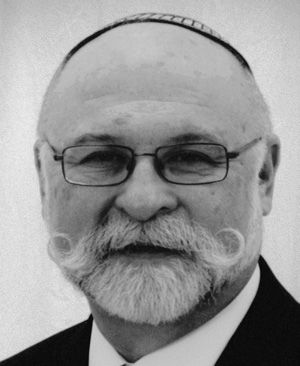We are each ‘holy to the Eternal’
Published February 22, 2018
You shall make a frontlet of pure gold and engrave on it the seal inscription: Holy to the Eternal. Suspend it on a cord of blue, so that it may remain on the headdress; it shall remain on the front of the headdress. It shall be on Aaron’s forehead. — Shemot 28:36-38
Why was Aaron to wear a frontlet so engraved?
I think there are several reasons, and I think that these answers teach something to all of us.
A frontlet that identified Aaron as “holy to the Eternal” on his forehead meant that he could not possible read it himself. Clearly, the location, at first glance, was chosen because whenever we engage another person, we often look at that place that is between the eyes and slightly above, the so-called “third eye.” It is the place that many of us identify as the one where the essence of the person resides.
Whenever the people engaged Aaron, they were aware that they were engaging a very special person, a holy man made distinctive by his relationships with God and the people of Israel. This attachment to his headdress reminded the people of that.
It may also have reminded Aaron that he was distinguished from all of the other people. Literally, he would have the weight of his office on his mind. By wearing the frontlet in such a location, he would have no doubt of the heavy responsibility that was upon him, that he was to comport himself in a manner that would identify him as “holy to the Eternal.”
However, there may well be another reason for Aaron affixing this type of a tag to his forehead instead of in a location where he could not see it. The fact that everyone else could see this unusual label, that everyone who gazed at him would see reflected back to him/her “holy to the Eternal,” could have been a way in which Aaron was to communicate their holiness. It could have been that the people were supposed to look at it and recognize not that Aaron was so special but that they, each and every individual, were so special, that all human beings, even those whom others may fail to recognize, are to be viewed as “holy to the Eternal.”
This message has never been more important than it is today. A tidal wave of hypernationalism has been sweeping countries throughout the world, including here in the United States. This hypernationalism tends to label individuals and groups as either “holy to the Eternal” or “damned by the Eternal.” These latter groups of people are to be shunned and, even worse, to be expelled from the mainstream of society, if not from the country itself.
Race, ethnicity, sexual preference, religious observance, citizenship and more have become the means by which these judgments are made and the justification for violence perpetrated against the “others.”
In the beginning of the Torah, when we read the story of Creation, we read that human beings alone are created in the Divine Image. Human beings alone have an extra element of holiness in our DNA, in our ability to determine right from wrong, in our search for meaning and purpose to our lives and in our quest for holiness.
Too often, however, as we encounter one another, especially as we encounter all those people in our communities, in our cities, in our country who are anonymous, with whom we share the sidewalks, the streets, the resources and the opportunities, we forget that they, too, are created in the Divine Image, that they, too, are “holy to the Eternal.”
Aaron’s frontlet can serve as a reminder that all of us, whether known to all or to but a select few, are set apart in some way, distinguished by our own identities and our own personalities, even as we have in common our basic humanity.
All of us are “holy to the Eternal” and to one another.
Rabbi Josef A. Davidson serves Congregation B’nai Amoona and is a member of the St. Louis Rabbinical Association.
















